weaving the barrio
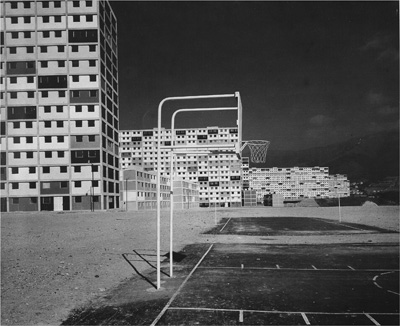
From building houses and canoes to fabricating manioc grators and baskets, making is regarded as a way of weaving.
— Tim Ingold [1]
According to Tim Ingold, the “standard” view is that artifacts are made while organisms grow. Using the metaphor of weaving to illustrate his point, the world of objects and humans, Ingold suggests, evolves in a process of continuous interaction that resembles the processes of human growth:
Where making (like building) comes to an end with the completion of a work in its final form, weaving (like dwelling) continues for as long as life goes on – punctuated but not terminated by the appearance of the pieces that it successively brings into being.[2]
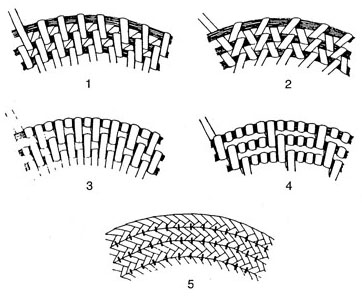 .
. 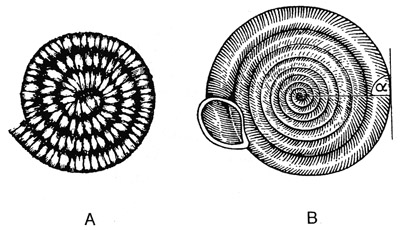
illustrations of weaving (from ingold 2000)
Ingold offers the analogy of the woven basket as a metaphor extendable to “objects” of any scale, and if the city can be classified as an object, it too might constitute an example of this type of weaving. In fact, the many forces and their resultant forms that have generated the present physical environment of a city such as Caracas seem particularly well suited to the application of Ingold’s formulation, and provides a material example of how such processes might be represented.
In Venezuela, grand social and physical transformations have often been closely connected with changing political conditions, and yet the relationship between these elements is not always straightforward or predictable. The country’s first attempts at self-transformation occurred during the late 1800’s. This early phase of modernization took place during a period of increasing secularization, and initially produced only small-scale alterations to the predominantly rural and agrarian local environment. It was not until the oil boom of the 1920’s that these influences began to manifest themselves on a larger physical scale as oil revenue began to radically transform the country. Under the dictator J.V. Gomez, the Banco Obrero was established as an autonomous governmental agency and became a pivotal institution in the generation thousands of units of worker housing constructed for the increasing numbers of poor residents and rural migrants attracted to the cities, and particularly to Caracas. The crisis created by this sudden influx was made more problematic due to the physical topography of the city and the steep mountains that formed its boundary, setting a seeming barrier to the city’s physical growth within the natural container of its physical space.
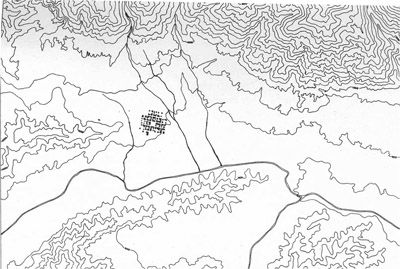
A
R
A
C
A
S
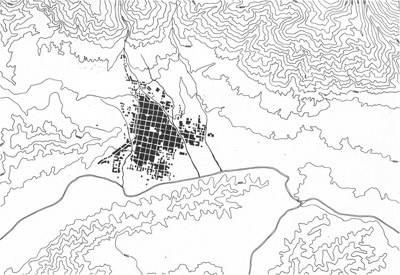
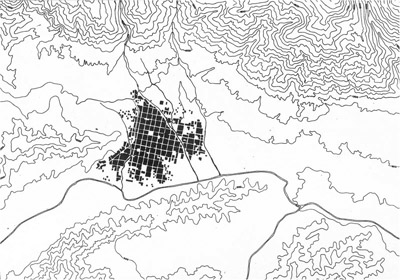
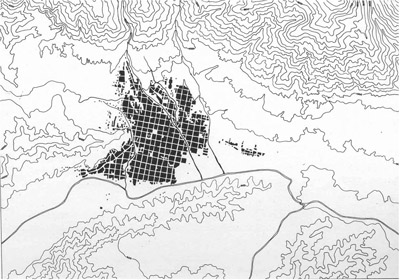
It is within this context that the progressive institutional culture of the Banco Obrero would oversee the construction of the largest number of public housing units in Latin America. In addition, by instituting its own architectural studio it provided a means of disseminating ideas between architects, artists, and students through the sponsorship of exhibitions, conferences, and publications, in the process creating both the conditions and the concepts that were intended to provide the solution to the growing housing crisis. Architecture was presented as “a tool for social betterment and urban transformation,” and its formal properties were thought to be capable of transforming the future residents along with their economic and material conditions. Perhaps because of its relative autonomy, the Banco Obrero survived the innumerable changes in political administrations with their differing agendas, ultimately enabling it to commission the design and construction of public housing projects on a vast scale during the 1940s and 50s.
During the 1940’s, a coup led by an ex-Communist would end with the establishment of Venezuela’s first democratically elected government. Massive interventions in the existing fabric of the central city were intended to mimic U.S. efforts at slum clearance and would later be replicated on the surrounding hills in attempts to clear the hillsides of the numerous ranchos and their residents.
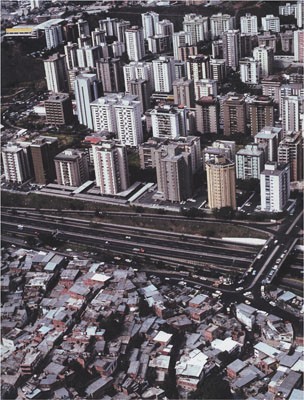
Only three years later, however, a military junta led by Marcos Perez Jimenez ousted the democratically elected government. Jimenez, objecting to the leftist reforms then being carried out, established in its place a right-wing dictatorship, eventually declaring himself sole, and self-appointed, ‘President’ in 1952. With the ascension of Jimenez, a shift in cultural models occurred as well; for Jimenez was interested not only in stronger economic ties with the U.S., by now Venezuela’s largest oil consumer, but he also expressed a desire to emulate the U.S. in other matters, particularly in its approach to modernization, thus shifting the emphasis in Venezuela away from a European, and specifically French, cultural model in favor of the perceived ‘superiority’ of the North American example. Thus the agenda of modernization that began as one focused on social reform was transformed into a narrative concerning progress based on function, efficiency and technology, within which the existing model of the large-scale housing blocks were now incorporated. The housing forms themselves, it soon became clear, were able to support both political agendas, and thus remained the same as before, a fixed strand in an otherwise changing weave.
In this climate of political revolution and economic modernization, the architect Carlos Raul Villanueva’s commission for the 23 de Enero project would be among the last commissioned by the Banco Obrero. The huge scale of these housing projects served more than one political purpose, for their massiveness meant not only an increase in the production of housing units for the poor, it also functioned to literally increase their visibility, becoming symbols aimed at attracting attention both from the local population as well as the outside world, and aiding Jimenez in his desire for international recognition. Ultimately, 23 de Enero represented a strong political and propaganda statement during a time in which only 5% of the population received 50% of the national income.[3]
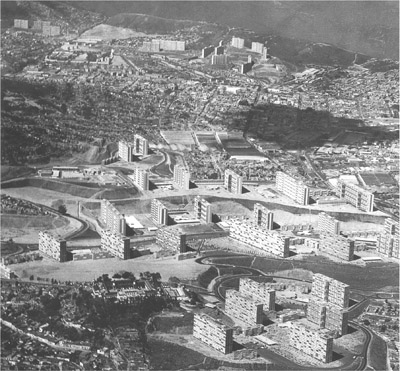
In fact, between 1941 and 1950 Caracas saw its population double, and the 16,000 new apartments in the 85 high-rise superblocks were still not enough to keep pace with the rapid growth of the city.[4] Yet by 1960 Venezuela, with a population of less than 7 million, had invested more in public housing than any other Latin American country.[5] That this should have occurred equally under both the regime of a right-wing dictatorship known for its brutality and corruption, as well as under more liberal and progressive regimes, gives cause for reflection on the nature of the relationship between politics, social policy, and urban form. Jimenez, it would appear, was able to harness the existing progressive agenda of the Banco Obrero to advance his own political ends, thus casting post-war Modernism and its distinctive architectural forms in the problematic role of serving two separate, and conflicting, causes. For while the forms would remain the same, their political and ideological context changed dramatically.
The architectural forms of the housing blocks at 23 de Enero were comprised of both mid- and high-rise low-income housing complexes built between 1955 and 1958 on a relatively, but far from completely, unoccupied hillside in Caracas. Previously existing ranchos, along with the hilly topography, were bulldozed into a paradigmatic, terraced, and open Modernist ground plane,[6] an action that caused lingering resentment among the former inhabitants even after their relocation to the new housing units, while the formal model of Le Corbusier’s Unite d’Habitation (1946-1952) provided Villanueva with his architectural inspiration, a re-deployment of the former primacy of the French cultural model and an attempt to incorporate an alternative aesthetic strand into the mix.
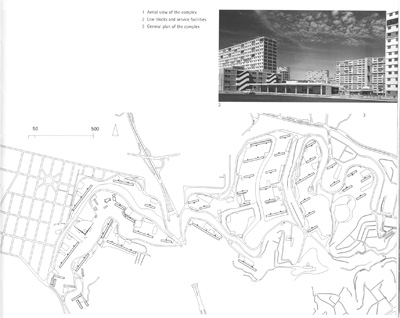
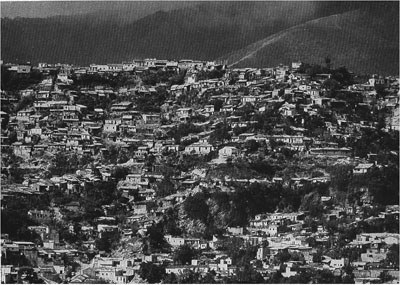 .
. 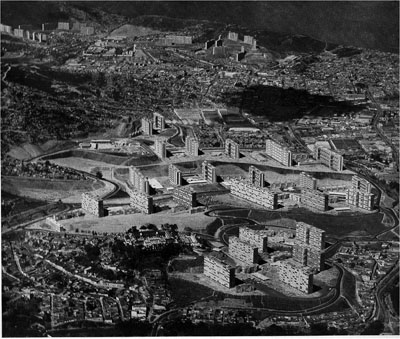
Left: ranchos existing prior to 23 de Enero. Right: after site clearing and construction
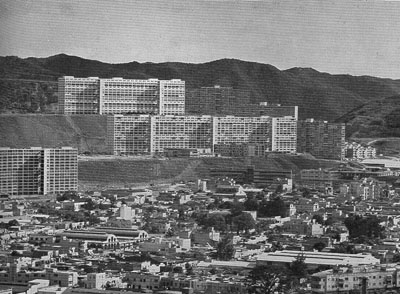 .
. 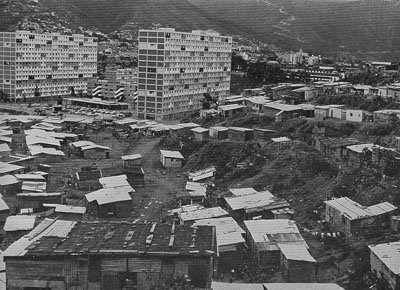
Above: photos from the Carlson Report (1959)
It was noted at the time that: “The appearance of the superblocks is spectacular, brightly painted in multi-coloured hues, and arrayed in majestic agrupaciones on hillside sites, with less than 20% land coverage.”[7] The architecture functioned as a political, as well as an aesthetic, statement, even as both defied any simplistic, one-to-one correspondence with a particular ideological position. In considering Villanueva and his work for such diametrically opposed governments, and given Modernist housing’s adaptation and suitability to the needs of those same governments, any argument regarding a direct relationship between architectural form and a particular political viewpoint becomes extremely problematic and the ability of the objects to absorb diverse, if not opposing, narratives regarding their significance offers yet more evidence that the two operate within separate, though often interconnected, spheres.
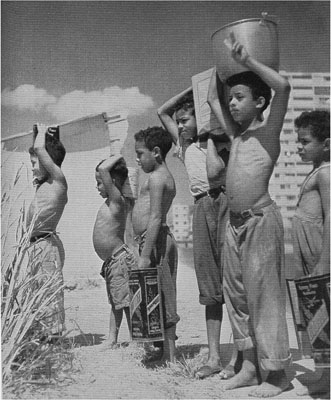
— Eric Carlson
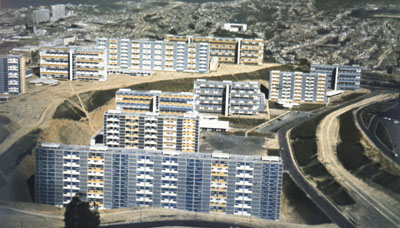
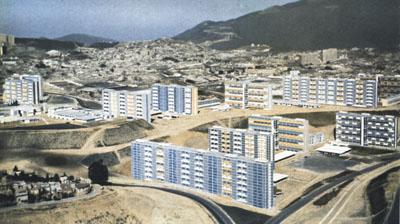
At the precise moment of its completion in 1958, however, and before the project could officially open, Perez Jimenez would fall from power in a popular uprising. As newspaper reports depicted widespread scenes of joyful celebration mixed with reports of bloody fighting between mobs and police officers, Jimenez fled the country. Immediately afterwards, the name of the project was officially changed from ‘2 de Diciembre,’ a date intended to celebrate Jimenez’s accession to power, to ‘23 de Enero’, the date of his fall. Then, without the consent of the authorities almost 4,000 families moved in, illegally occupying the apartments. The first occupancy, then, and almost all occupancy thereafter, is in essence by squatters. This fact no doubt contributed to the financial problems that immediately beset the project, for within a year of its completion the Banco Obrero was losing hundreds of thousands of dollars a month, the effects of which created “a state of economic and social disaster” in the superblocks. Within a year of its completion, the living conditions at 23 de Enero were depicted in official reports as “the worst” of any of the modern housing blocks in Caracas, a condition that was attributed primarily to economic, social, and administrative problems rather than to the physical buildings themselves.[8]
In the end, the large-scale Modernist superblocks proved too difficult to manage and too expensive to maintain, leading to the steady deterioration of both physical and social conditions (Image 12). The new inhabitants, all from rural areas and unaccustomed to urban life in high-rise apartments, had simply transferred their traditional living arrangements to their new homes, continuing to inhabit their high-rise units much as they had lived in their rural shacks or ranchos. This continuity between forms of social life undermined the transformative intentions of the buildings, and the adaptation of the individual to the environment resisted the attempts at imposing new social forms from without, thereby proving traditional social patterns were more durable than anticipated, and contributing to the difficult living conditions in the building.
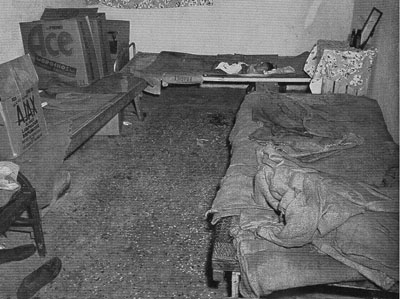 .
. 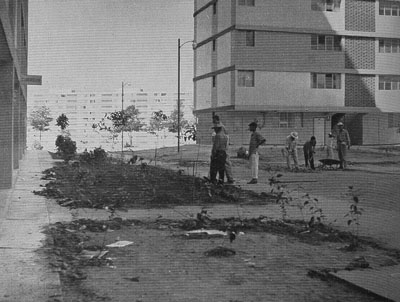
23 de Enero. Left: apartment interior. Right: open space.
The fall of Jimenez not only represents another radical shift in Venezuelan politics, from a rightist dictatorship back to a democratic form of government, but it also unintentionally exacerbated the housing problem in ways that continue up to the present. The close connection between political change and urbanization in 1958:
…ushered in a new and entirely unprecedented phase of [squatter] development. Restrictions on land settlement were immediately lifted, and families poured out of their crowded ranchos to grab up vacant land on the outskirts of the cities as quickly as possible. When campesino families still in the countryside heard about the new opportunities, the flow of migration speeded up tremendously….So concentrated was the trend that today more barrios trace their origin back to those first twenty-four months following the Revolution than to any other period.[9]
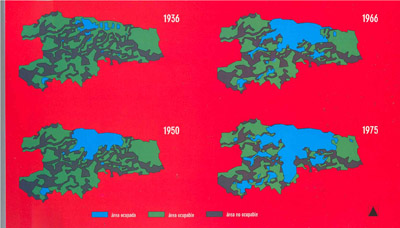
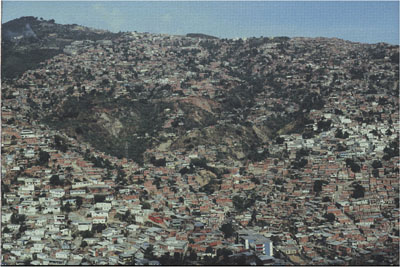 .
. 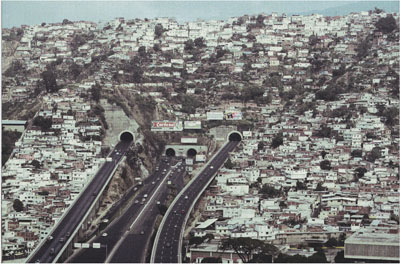
Above: Caracas 2000
In spite of the even greater need, however, no more large-scale housing blocks were ever built. Instead, political confusion marked the immediate post-Jimenez regimes, and the subsequent government of reformist President Romulo Betancourt (1959-1964) had to fight to survive amongst repeated uprisings and insurrections by both leftists and rightists. The combination of political will and financial resources that had produced the vast public housing projects of the previous 30 years never re-emerged.
In spite of the many problems associated with the housing at 23 de Enero, however, a government sponsored evaluation report was insistent on one point, that “the construction of ranchos be prohibited drastically on land of the projects, to make sure of space availability for the needed community facilities and services.” Despite the emphasis the report placed on the essential role of the open ground plane in providing a social space for the residents of the superblocks, successive governments declined to interfere when these open spaces began to be filled in by barrios.
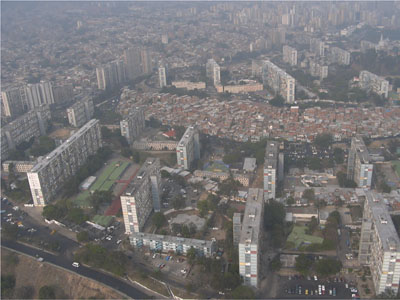
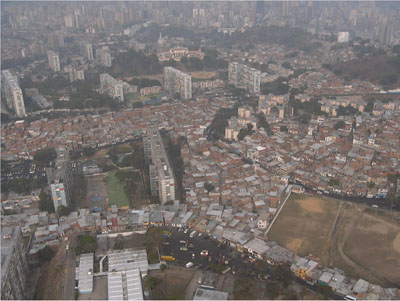
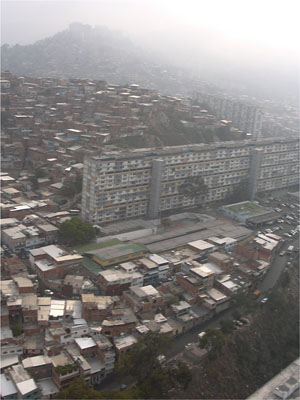 .
.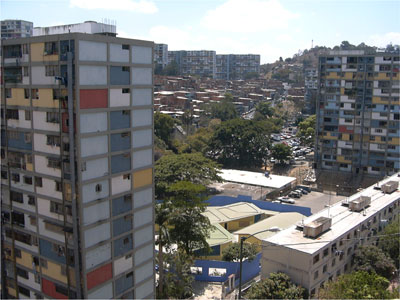
Invading from the periphery, these new barrios, descendents of the ranchos that had originally been cleared in order to make way for the more “progressive” high-rises, represented a new form of housing together with a new approach to “making,” one that proceeded without formal plans or designs and evolved according to generative principles that had no relation to concepts derived from the abstract ideas of architectural designers. In this respect, the barrios constituted a “bottom-up” approach to the housing crisis, rather than the “top-down” designs implemented by the designers and institutions responsible for 23 de Enero.
The barrios were comprised of innumerable one- and two-storey, hand-made, concrete frame and tile infill housing constructed according to the topography rather than in vertical towers built on leveled land. The procedure for their construction depended on the subdivision of illegally appropriated public land by a single individual who would then proceed to sell lots to “owners” who in turn would construct their homes according to the most fundamental rules of site, materials and economics. These building sites were acquired without any legal grounds, much like the original squatters who settled the superblocks, with many of them on slopes considered extremely unsafe, subject to devastating mudslides and a range of other ills. Built without access to public services or utilities, in order to survive these new barrios plugged themselves into the old housing, from which they took their electricity, water, and sewer. At the same time, they were integrating with them socially, as extended families now lived in both the high-rises and the adjacent barrios thus forming a social network that bridged both forms of housing without distinction.
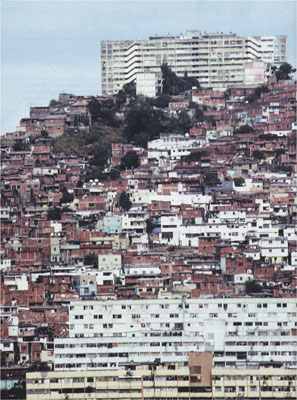 .
. 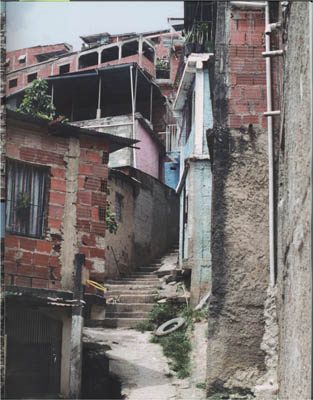
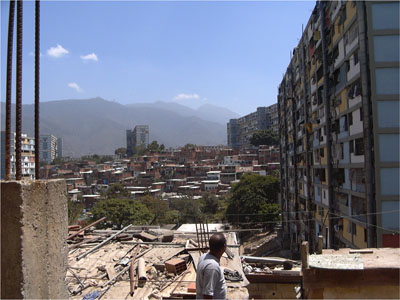
Over time, the open space surrounding the superblocks was colonized, accommodating an increasing proliferation of new “objects” that were then incorporated into the evolving landscape, transforming the meaning and relations between the previously existing structures as well as the way the housing was inhabited. No longer did there exist a Modernist “open ground plane” but in its place an inhabited surface that could expand or contract according to circumstances. According to Ingold, the “final” form of any collection of individual parts will remain alive to the extent that they contribute to the evolution of the whole, and the process then continues until new forms cease to come into being. The result is that today 23 de Enero consists of a virtually unknown number of dwellings, and an equally incalculable number of residents, in a space with no clear boundaries or form.
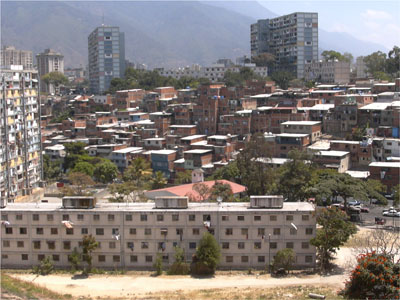
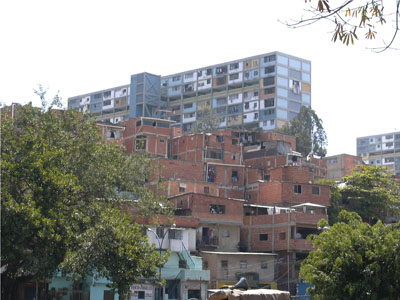
Recently, the government has begun handing over land title to the families who have built in the barrios, thus legitimizing the status of the 60% of the 26 million residents of Venezuela who live in such homes. Given the severe housing crisis that still exists, the government has in effect authorized Venezuelans to help themselves in the face of a governmental failure to provide such basic services. This process is intended to physically transform as well as to stabilize the barrio by providing it with the necessary utilities and services such as water and sanitation, as well as to politically stabilize it, democratizing it through the establishment of governing councils that could then act to stabilize the social fabric. Ingold states:
If forms are the outcomes of dynamic, morphogenetic processes, then their stability can be understood in terms of the generative principles embedded in the material conditions of their production.[10]
The stability of the physical objects and their environment, of social life, and of the political system can be seen as separate strands that comprise the forms produced by these generative conditions, and as such they are inseparably bound together over time in a way that precludes the consideration of any one of those strands individually. To view the objects themselves as distinct from the forces that shape them is as problematic as examining those abstract forces without considering the material consequences those forces bring into being.
In 23 de Enero, the forces that weave together social, political and physical forms have produced a landscape that provides not only such a reflection, but also a visual metaphor for the type of “world-weaving” Ingold describes, one in which forms lose their sharp divisions and can best be understood as surfaces without clear boundaries of interior and exterior, mind and matter, subject and object. According to Ingold: “The forms of objects are not imposed from above but grow from the mutual involvement of people and materials in an environment.”[11] And yet, as becomes apparent in Caracas, the influence of one strand on another in forming the “object” is neither predictable nor consistent. A change in one strand of the weave may, or may not, produce a change in another. There are no morphological “rules” that govern the development of such an organism. Instead, in the play of forces represented by the various strands, the outcome of which is neither completely free nor causally determined, the “object” can perhaps be better represented metaphorically by the work of art than a biological specimen. Thus the weave of people and things, objects and environments, constitute not only a process of technical production but of imaginative creation as well.[1] Tim Ingold, The Perception of the Environment, London: Routledge, 2000, p. 347.
[2] Ingold, p. 348.
[3] Eric Carlson, “Evaluation of Housing Projects and Programmes: A case report from Venezuela,” Town Planning Review, October 1960, p. 193.
[4] Not only did the pace of growth outstrip the pace of housing construction, the housing was cited as a contributing factor in the rapid population growth by acting as a magnet for migrants in the rural areas in search of better living conditions. Carlson, p. 193.
[5] Carlson, p. 187.
[6] The speed and deliberateness with which the authorities acted to demolish the existing ranchos created an animosity among the former inhabitants that even the opportunity for new housing did not erase, contributing to housing authority management problems for years afterwards.
[7] Carlson, p. 199.
[8] It is interesting to note that the most severe criticism of the design centered on the stairwells, citing them for fostering unsafe conditions and being inadequate to their task, a critique similar to the one that would be directed at the elevators of the post-war Chicago housing projects.
[9] Talton F. Ray, The Politics of the Barrios of Venezuela, Berkley: University of California Press, 1979.
[10] Ingold, p. 346.
[11] Ingold, p. 347.